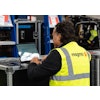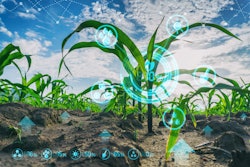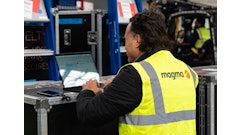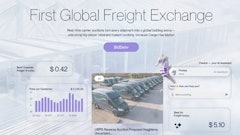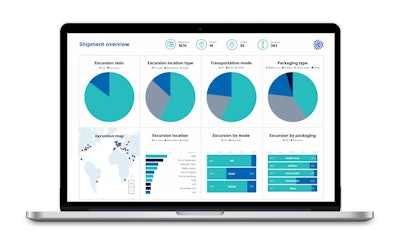
Every day, food quality managers are faced with the ultimate time-pressure dilemma—What is the most pressing concern of the day? This is in addition to standard day-to-day workloads, which includes strengthening food safety programs, managing document controls, the implementation or updating of quality standards and standard operating procedures and managing daily fires. With the ever-present challenges faced within the four walls of their facilities, how should quality managers prioritize the next major projects when all of these other priorities compete?
Quality managers often find that those pieces of a program, including the cold supply chain, are out of sight and out of mind until something goes very wrong. By that time, a major event may have occurred, which might negatively affect customers and brands. Alternatively, products may have gone to waste, causing substantial operational costs and even downstream stock outages.
Unfortunately, when things do go wrong, a significant amount of resources are spent collecting the relevant paperwork and other documentation to piece together an incident, determine its root cause, then implement corrective actions and define ownership and accountability. After experiencing a challenging event like this, organizations find it critical to implement programs that ensure this type of problem is prevented in the future.
Organizations find that, as their supply chains grow in complexity, they are posing greater challenges and risks to food safety programs and brand protection efforts. This is especially true in the challenges posed by international suppliers and locations, the demand for fresh foods and ingredients sourced from afar and the trend of just-in-time processing. Each of these increases the pressure on the supply chain to work efficiently and effectively all the time, where a break in the supply chain can lead to drastic consequences.
As food companies begin their technology journeys into the New Era of Smarter Food Safety, it is worth considering the implementation of a real-time supply chain temperature monitoring and visibility tool to help solve these challenges. Teams find that having real-time insights over their perishable shipments allows them to change the way they manage their logistics programs. As an added benefit, they take advantage of the efficiencies that a real-time solution provides, for instance, by decreasing the time needed to review shipment data.
There are often magnitudes of time spent trying to solve issues that arise such as premature spoilage and outages and shortages on the retail level. Many organizations are used to experiencing these issues and have unfortunately accepted them as simply the “cost of doing business.” This is particularly the case in areas prone to high heat and for products susceptible to temperature deviations.
However, food safety and quality managers should consider the impact that low-level temperature abuse can have on product quality. A deviation as simple as holding temperatures five degrees above the optimum upper-temperature boundary can easily reduce a product’s shelf life by several days. This is especially true for items susceptible to temperature abuse, such as fresh poultry.
Even a single, high-level temperature spike that is sustained for two hours can significantly impact the shelf life of perishable produce items, such as leafy greens. These types of incidents and the next-level effects of stock outages and shortages affect customer loyalty and a company’s brand. Having the ability to identify these types of anomalies enables quality teams to permanently solve these types of persistent quality issues, which can save time and money, and helps to enhance and ensure customer satisfaction and loyalty.
As companies have transitioned to a state of FSMA’s required Preventative Controls within their manufacturing processes, they have also been driven to implement operational processes that analyze risks and prevent from occurring in the first place. By actively managing the cold supply chain, quality managers are able to move from a state of reaction to proactive, preventative control.
For organizations that manufacture food products that require temperature control for food safety purposes, temperature management is a mission-critical and required for preventative control within those processes and operations. How can quality managers assure that once products are loaded onto a refrigerated truck, temperatures will be controlled en route? With a real-time supply chain temperature monitoring solution, compliance and food safety can be tracked down to the product level.
If your company has experienced a scenario in which a load has shown up at a delivery location and was missing its required trailer seal, you may have faced the dilemma of determining whether you should accept or reject the delivery. Your decision might depend on how badly you needed the product, and whether you could ensure that it hadn’t been tampered with.
With light excursion events, in addition to real-time environmental monitoring, supply chain monitoring provides an added level of confidence regarding transportation security. Consider how helpful it would be to identify the specific time and location regarding when a truck’s doors closed and opened to determine whether they were unexpected, or whether they might have impacted product. These types of insights enable an organization to accept the load with confidence or reject it based on the cause.
Quality managers face competing demands on their time. Having the ability to solve challenges in a sustainable manner can help managers focus on other critical tasks. When considering the costs that each of these types of incidents have in the aggregate and that state-of-the-art technology can help an organization solve these persistent challenges, it makes sense to investigate these solutions for long-term, systematic improvements.


